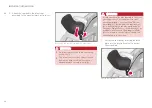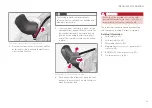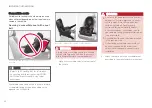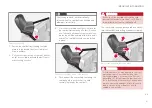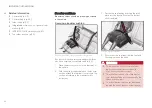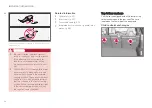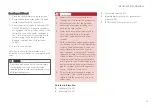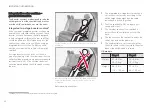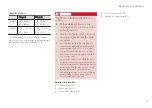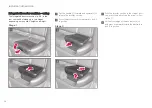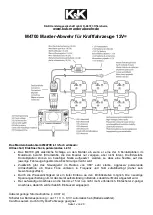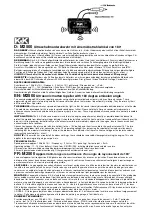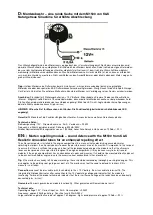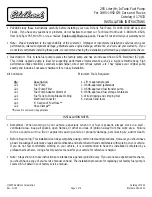
IMPORTANT INFORMATION
}}
43
Crash mode – starting the vehicle
If Crash mode has been set Crash
mode (p. 42)) and damage to the vehicle is
minor and there is no fuel leakage, you may
attempt to start the engine.
To do so:
1. Remove the remote key from the ignition slot
and open the driver's door. If a message is
displayed that the ignition is on, press the
start button.
2. Close the driver's door and reinsert the
remote key in the ignition slot.
3. Try to start the vehicle.
WARNING
If the message
Safety mode See manual
is
still displayed, the vehicle should not be driven
and must be towed. Concealed faults may
make the vehicle difficult to control.
Related information
•
Crash mode – general information (p. 42)
•
Crash mode – moving the vehicle (p. 43)
Crash mode – moving the vehicle
If the message
Normal mode
appears after an
attempt has been made to start the engine, Star-
ting the vehicle after a crash (p. 43), the vehicle
may be moved carefully from its present position,
if for example, it is blocking traffic. It should,
however, not be moved farther than is absolutely
necessary.
WARNING
Even if the vehicle appears to be drivable after
Crash mode has been set, it should not be
driven or towed (pulled by another vehicle).
There may be concealed damage that could
make it difficult or impossible to control. The
vehicle should be transported on a flatbed
tow truck to a trained and qualified Volvo
service technician for inspection/repairs.
Related information
•
Crash mode – general information (p. 42)
Child safety
Children should always be seated safely when
traveling in the vehicle.
General information
Volvo recommends the proper use of restraint
systems (p. 45) for all occupants including chil-
dren. Remember that, regardless of age and size,
a child should always be properly restrained in a
vehicle.
Your vehicle is also equipped with ISOFIX/
LATCH attachments (p. 53), which make it
more convenient to install child seats.
Some restraint systems for children are designed
to be secured in the vehicle by lap belts or the
lap portion of a lap-shoulder belt. Such child
restraint systems can help protect children in
vehicles in the event of an accident only if they
are used properly. However, children could be
endangered in a crash if the child restraints are
not properly secured in the vehicle. Failure to fol-
low the installation instructions for your child
restraint can result in your child striking the vehi-
cle's interior in a sudden stop.
Holding a child in your arms is NOT a suitable
substitute for a child restraint system. In an acci-
dent, a child held in a person's arms can be
crushed between the vehicle's interior and an
unrestrained person. The child could also be
injured by striking the interior, or by being ejected
from the vehicle during a sudden maneuver or
Summary of Contents for V60
Page 1: ...OWNER S MANUAL SUPPLEMENT ...
Page 2: ......
Page 8: ......
Page 9: ...INTRODUCTION ...
Page 24: ......
Page 25: ...IMPORTANT INFORMATION ...
Page 64: ......
Page 65: ...PRACTICAL INFORMATION ...
Page 144: ......
Page 145: ...FUSES ...
Page 156: ......
Page 157: ...SPECIFICATIONS ...
Page 161: ...SPECIFICATIONS 159 Dimensions This section lists your vehicle s most important dimensions ...
Page 175: ......
Page 176: ...TP 23838 English USA Canada AT 1717 MY18 Copyright 2000 2017 Volvo Car Corporation ...




















